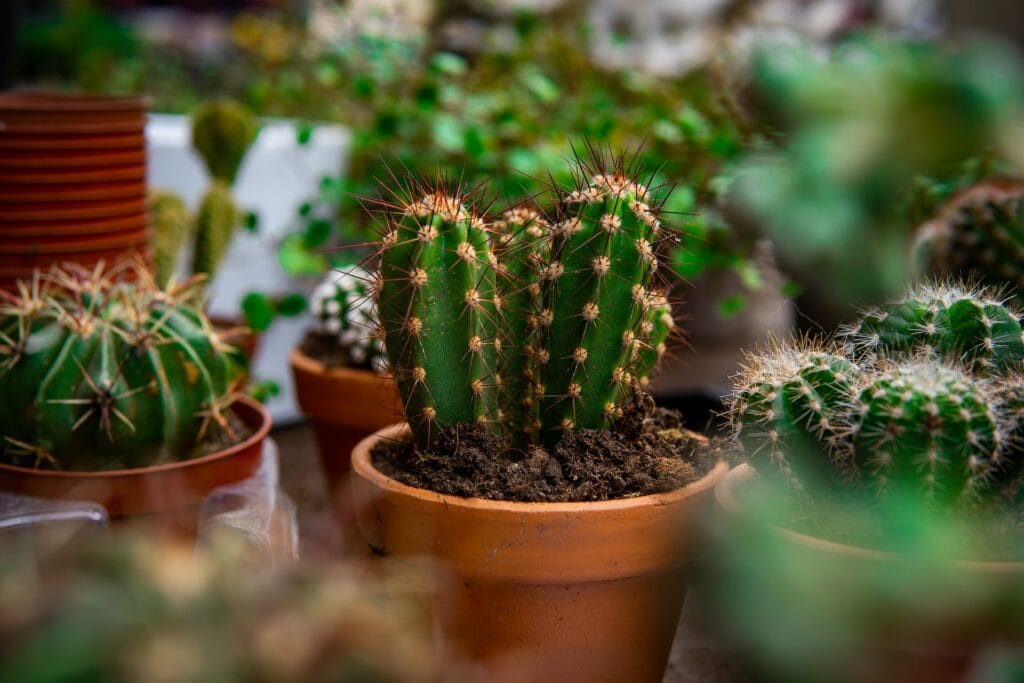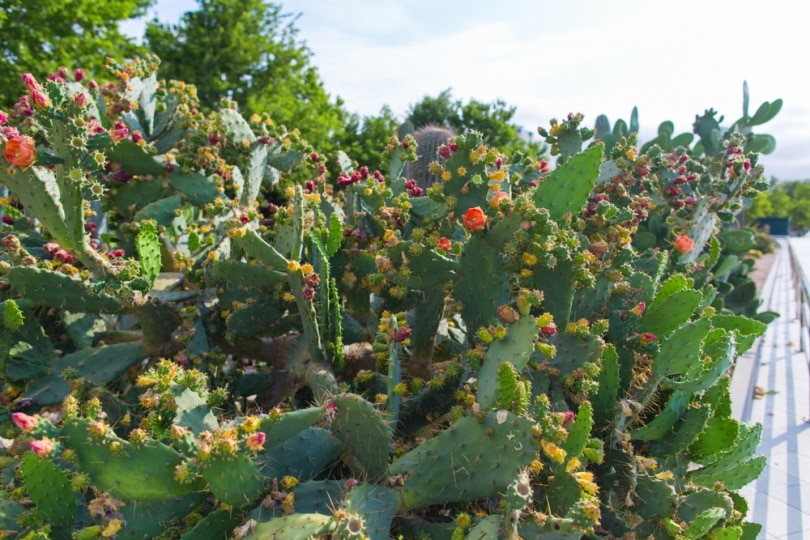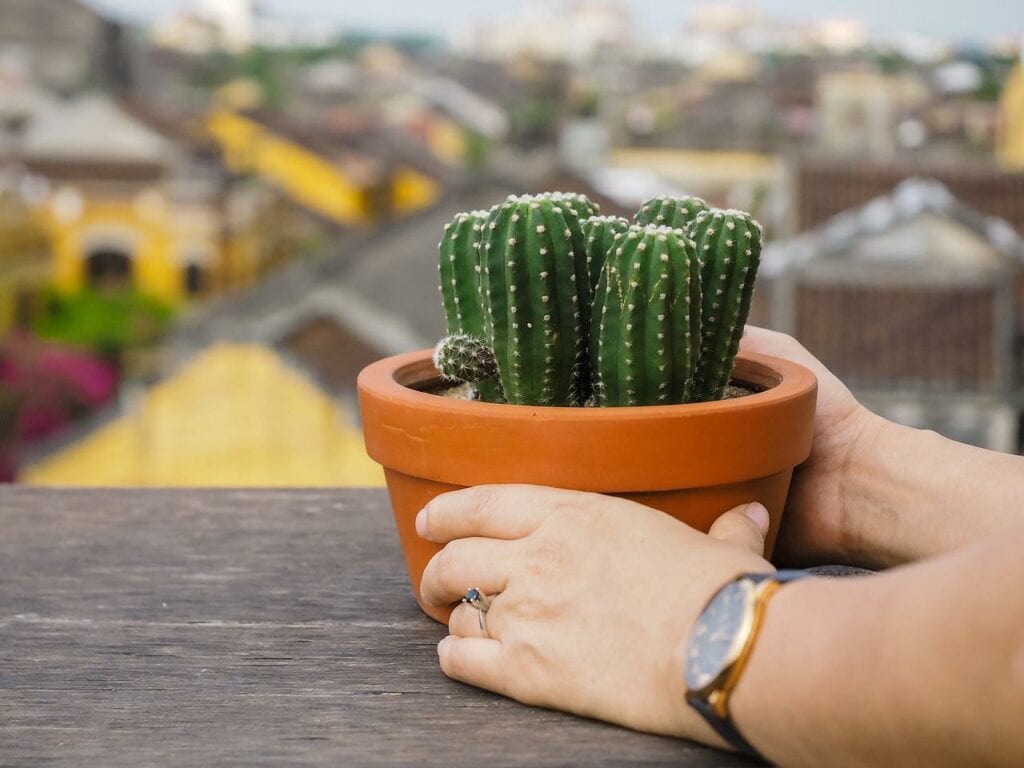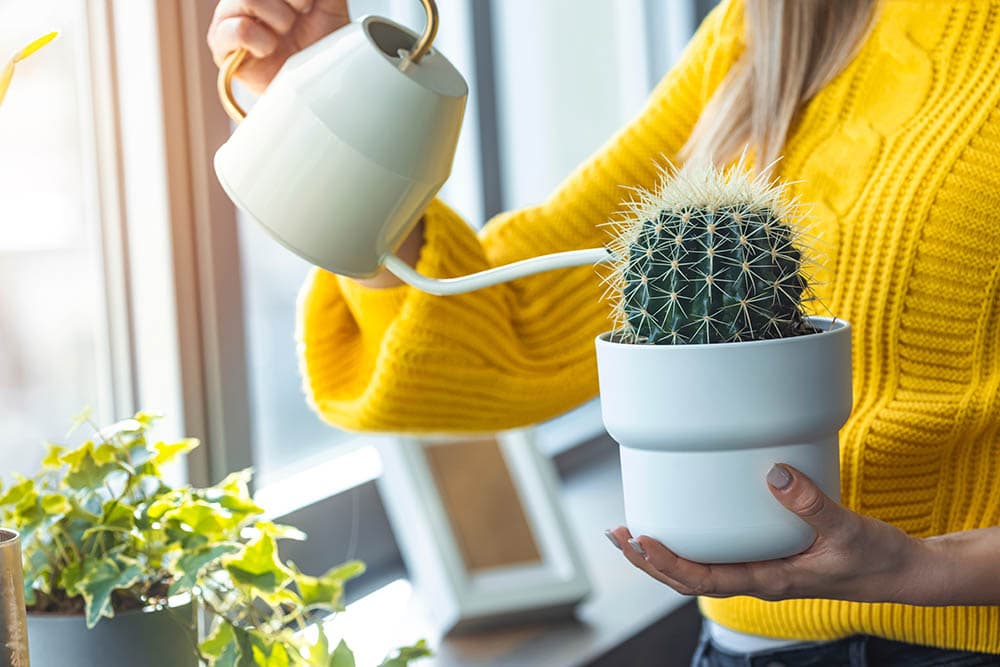How to Propagate Cactus Pads: 5 Tips & Tricks
-
Kristin Hitchcock
- Last updated:

While many types of cacti do have seeds, it is often easier to propagate new plants from cactus pads. While this may seem a bit complicated, the process is actually very easy. In fact, if you have one healthy plant (or part of one, at least), then you can quickly have many different cactus plants.
However, there are some very specific steps you need to take for this to work. Each species of cactus may have slightly different propagation needs. Still, the process is quite similar no matter what cactus you’re dealing with.
The 5 Tips & Tricks to Propagate Cactus Pads
1. Prune a Healthy Cactus

First thing’s first, you need to get a healthy cactus pad from a cactus. To do this, you’ll want a healthy cactus plant that is ready to prune. Different species need to be pruned at different times. For instance, many blooming cactus plants need to be pruned after they have bloomed. You’ll want to research your particular species to find out when it needs to be pruned.
Next, you’ll want to break the cactus pad off of the main plant. Because cacti grow in sections, this process usually isn’t very hard. The area between sections is often easy to break, as it is thinner and weaker than the rest of the plant. For most plants, simply pulling the pad off with a bit of a twist will give you a clean break.
However, if you find this difficult, you can cut a pad off. Be sure to cut the area between sections—not the section itself. You can also utilize a sharp, sterile knife for this step. Be sure it is clean, as you don’t want to cross-contaminate your plant.
2. Let the Plant Dry
Next, you’ll want to leave the pad in a cool, dry place for a bit for the cut to dry out. If the cut doesn’t dry, there is a chance that it will become infected and rot. Therefore, you don’t want to place the cactus into a pot of moist soil until the cut is dried and healed.
Of course, you don’t want to leave the cactus out for too long, either. Often, it only takes a day or so for this wound to heal. As soon as it is dry and calloused, it is time to plant it.
3. Fill Up Several Pots

When choosing pots, it is vital to remember that your cactus will get bigger. While it is quite small right now, it won’t be forever. Therefore, choose a pot that can handle a full-grown cactus. Plus, the pad itself will also get bigger as it becomes the stem of the cactus.
You’ll want to use soil that is suitable for your cactus. Often, your average potting soil simply won’t work in this regard. Instead, you’ll want soil that has great drainage. You can mix your own or purchase a commercial option. Be sure to research your particular species to ensure that you get the right soil for it.
4. Place the Pad on the Soil
Next, simply lay the pad flat on the soil. You’ll see many pictures of people turning them upright. However, this increases the odds that they will fall over or out of the pot, which can interrupt the rooting process. Therefore, we simply recommend laying them directly on the soil on their side.
You may be tempted to place them upright for aesthetic purposes. However, the odds of the pad falling over are high. Unless you happened to cut off a pad that is simply great at standing upright, you probably won’t have much luck.
5. Water

Now that the cactus is in the pot, it is time to water it and wait. Soak the soil as you would with a larger plant and then go do something else. The soil should stay pretty moist for a few weeks to ensure that the plant can root properly. However, after that, you should begin watering the plan like normal.
Roots can take quite a while to form. Often, it may take anywhere up to several weeks. It depends on how much you’re watering the plant, as well as the species. More water will help the roots grow faster, but you don’t want to soak the roots so much that they rot.
Do the best you can with watering. Aim to soak all of the soil, trying to get the water underneath the pad as much as possible. Don’t let water pool on the pad, though, as this can cause rot. Simply blow the water off the top of the pad or bump it off, as much as possible.
The roots will form from the same spot where the spines grow. You should notice the roots growing from the spine area after a week or so. They look like small, yellow tubes. The roots should be thick and healthy. Smaller pads typically grow roots faster than larger ones, though this isn’t always the case.
 Can You Break Off a Piece of Cactus and Plant It?
Can You Break Off a Piece of Cactus and Plant It?
Yes, though the process is a bit more complicated than that. Propagating takes time and requires some particular care, such as watering the plant heavily. However, the process isn’t so complicated that the average person can’t do it. It just takes a little bit of know-how.
Furthermore, not all species of cactus grow in this manner. However, most of them do. Propagating cacti is often easier than growing them from seeds, so it is usually the chosen method for making new plants.
Conclusion
Propagating a cactus isn’t difficult. However, it does require some very specific steps to ensure that the cactus grows quickly and healthily. For instance, watering the new cactus regularly is important, even though these cacti are usually used to dry conditions. The more water you provide the plant, the faster the roots will grow.
We hope that our straightforward steps help you propagate your own cactus. Because you can often cut off many pads a year, you can often grow many different plants from a single cactus.
See also:
Featured Image Credit: Barthelemy Rigaud, Unsplash
Contents
